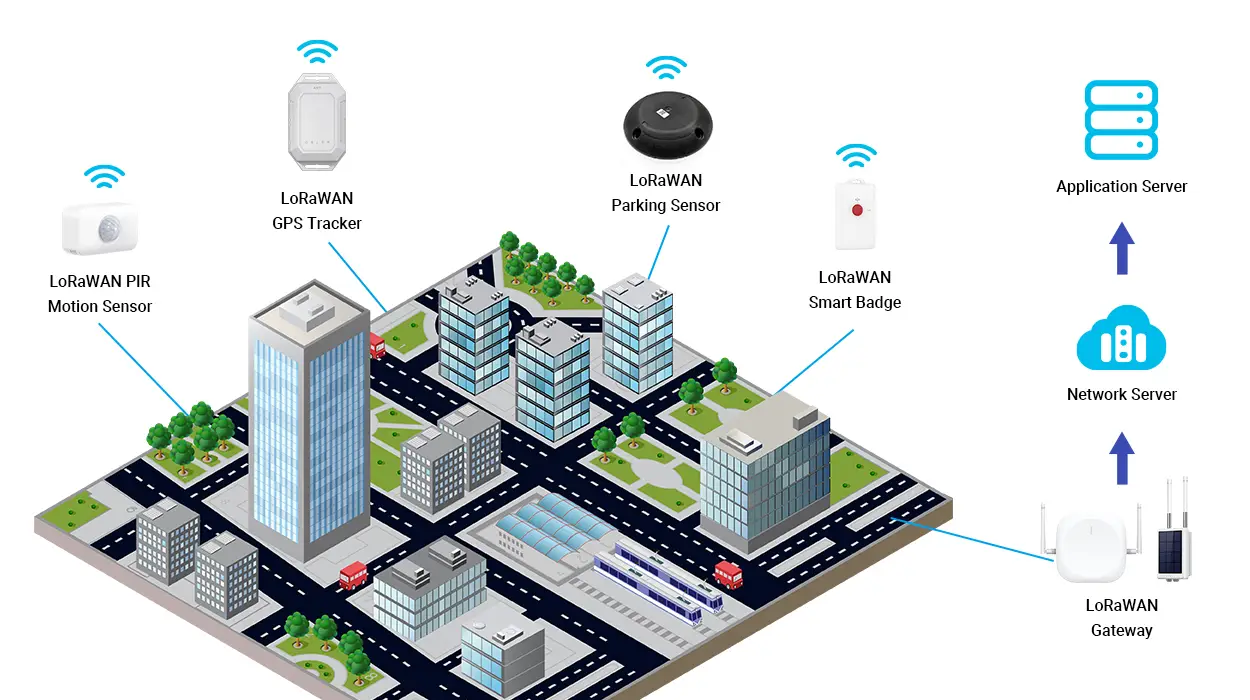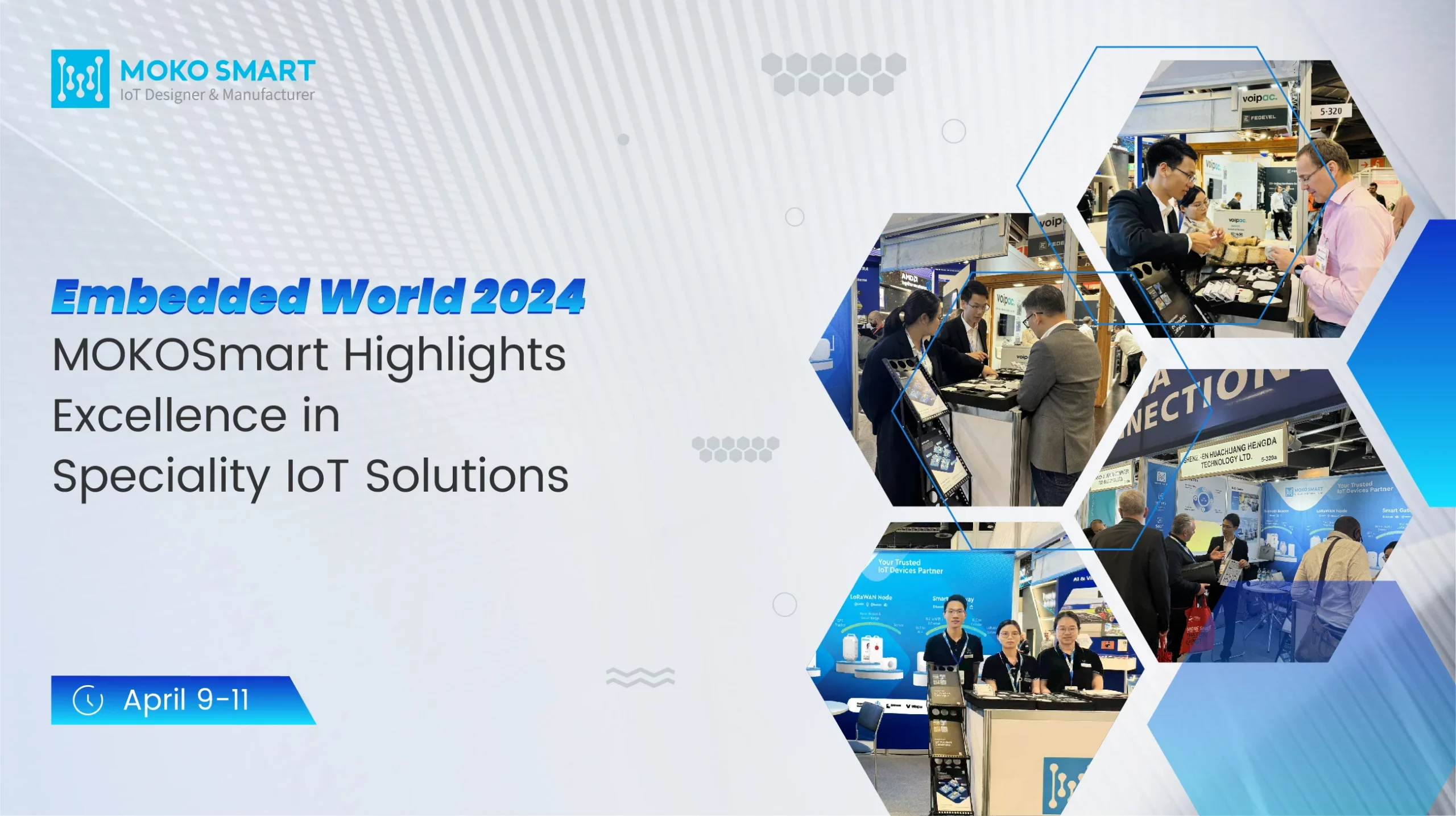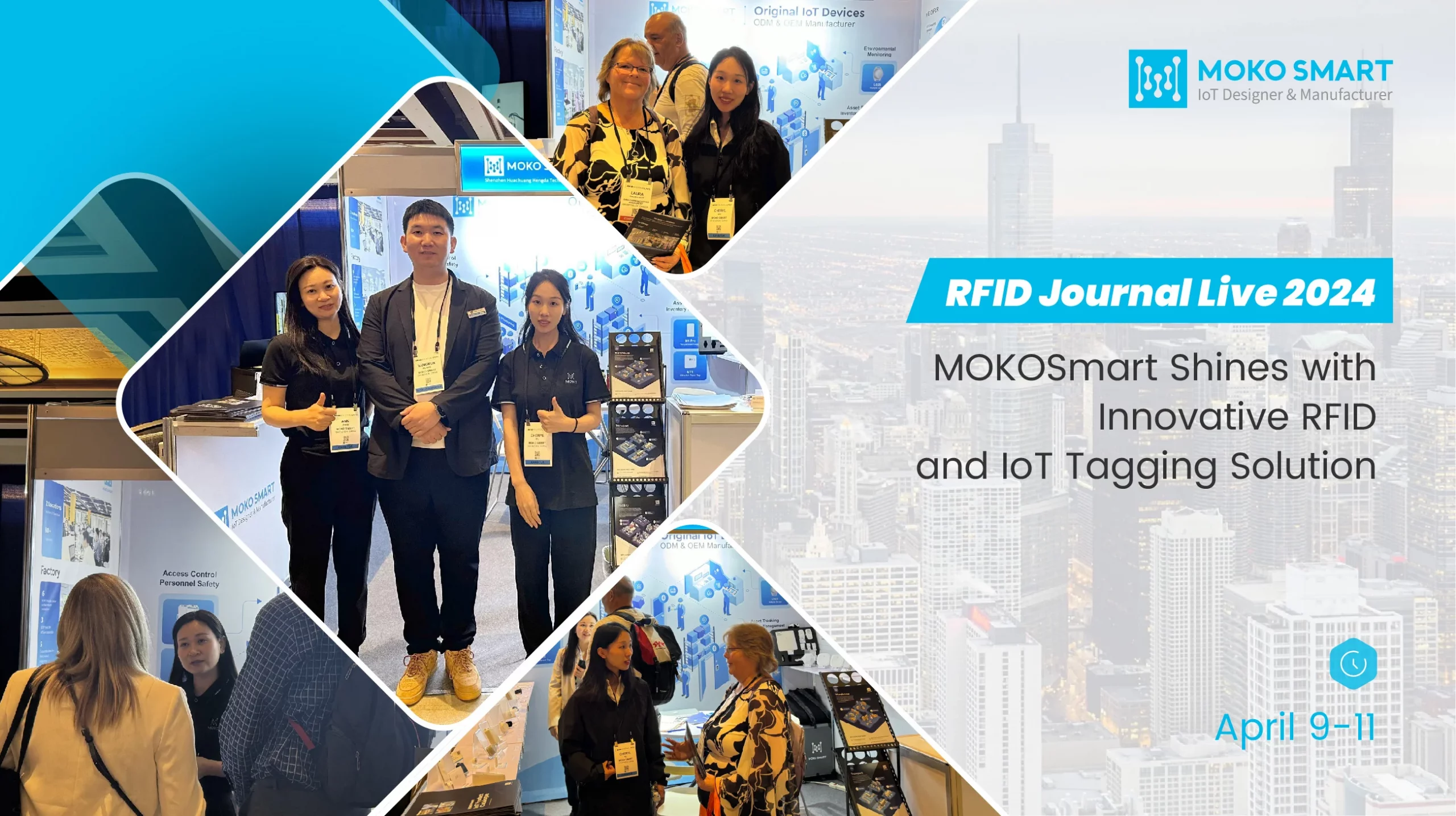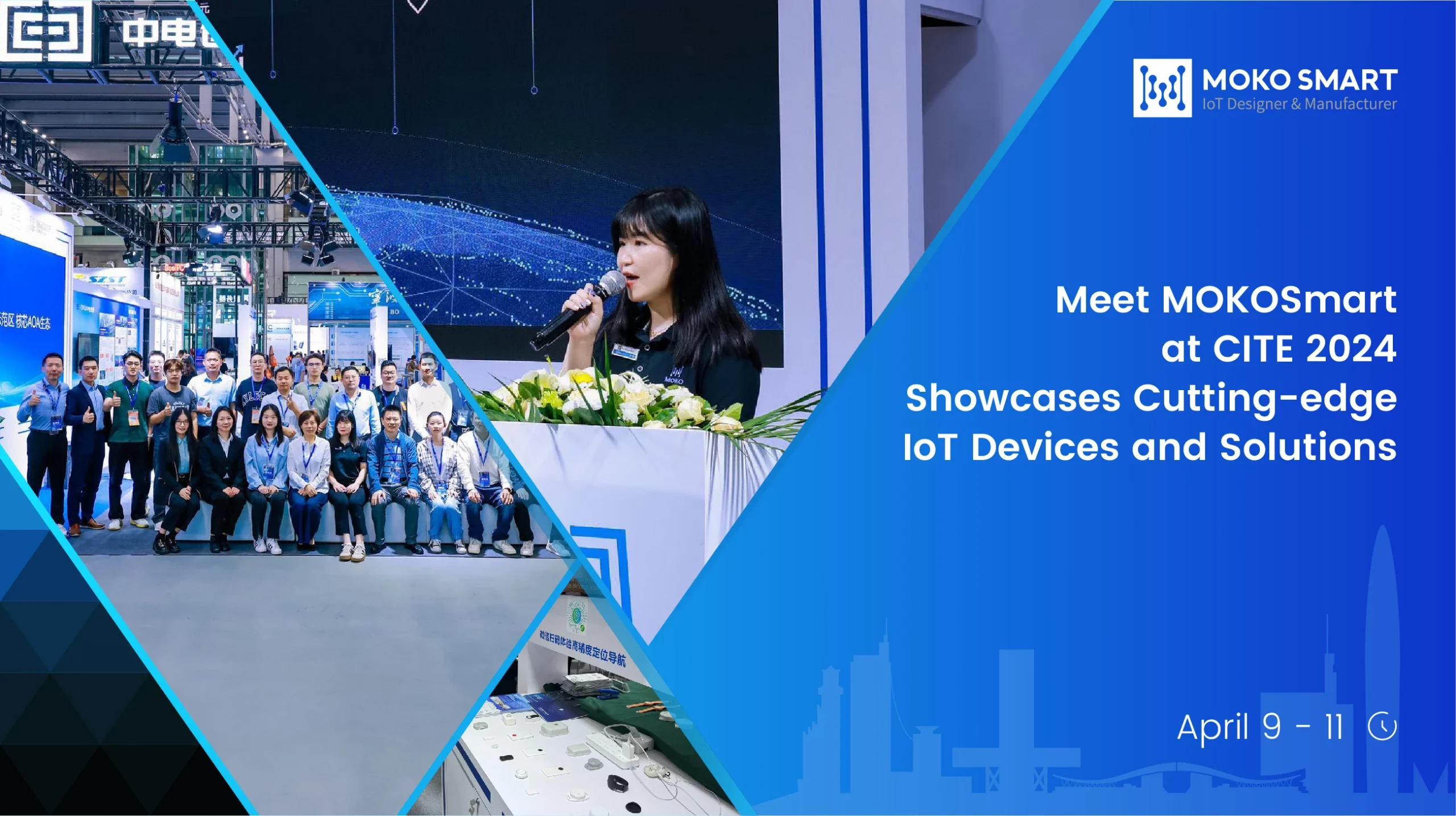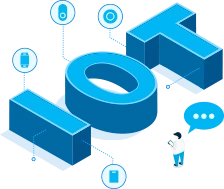Are you contemplating the integration of LoRaWAN into your IoT solution? In the realm of rapidly advancing IoT technology, LoRaWAN stands out as a formidable player in the LPWAN sector. If your consideration leans toward a LoRaWAN network solution for industrial or enterprise applications, delving into the intricacies of this protocol is a crucial first step. In this article, we provide a deep dive into all key aspects of LoRaWAN technology. Join us as we navigate through the essentials, giving you the insights to make informed decisions for your IoT ventures.
What is LoRaWAN technology
LoRaWAN stands for Long Range Wide Area Network. It is a low power WAN protocol designed for wireless battery-operated things and assets. LoRaWAN networks typically use unlicensed spectrum like 433MHz or 900MHz bands to connect devices to the internet across long distances wirelessly.
The technology is based on a physical layer called LoRa, which uses chirp spread spectrum modulation. This method spreads the signal over wider bandwidth, making it robust to interference and giving it the long range characteristic. Semtech originally developed the LoRa modulation technique and maintains it.
LoRaWAN adds a network layer protocol to enable two-way communication between end devices and gateways. Gateways then connect to central network servers over IP. This architecture enables features like adaptive data rates, device addressing, security, roaming etc. making large scale deployments possible.
The LoRa Alliance, is an open non-profit association that oversees LoRaWAN standards and drives global adoption. It has over 500 members globally across device makers, operators, solution providers advancing deployment.
The difference between LoRa and LoRaWAN
Simply put, LoRa refers to only the physical modulation technique or signal encoding scheme that enables long range communication. It uses the concept of chirp spread spectrum modulation and forward error correction to achieve coverage range of over 10 miles in rural settings and 3 miles in cities.
The LoRaWAN protocol runs on top of LoRa modulation to manage the data communication, enable two-way exchanges and implement network security functions. This includes capabilities like data rate optimization, addressing schemes, implementing AES-128 encryption and managing data exchanges between devices and gateways.
So LoRa is the physical layer modulation scheme allowing for long range signaling, while LoRaWAN defines the communication protocol and standards. Think of LoRa as the highway enabling vehicles to cover long distances fast, while LoRaWAN is the traffic signs and controls that govern orderly and secure transit over that highway.
How LoRaWAN technology works
The LoRaWAN architecture includes end-devices/nodes with sensors, gateways, network server, and application server.
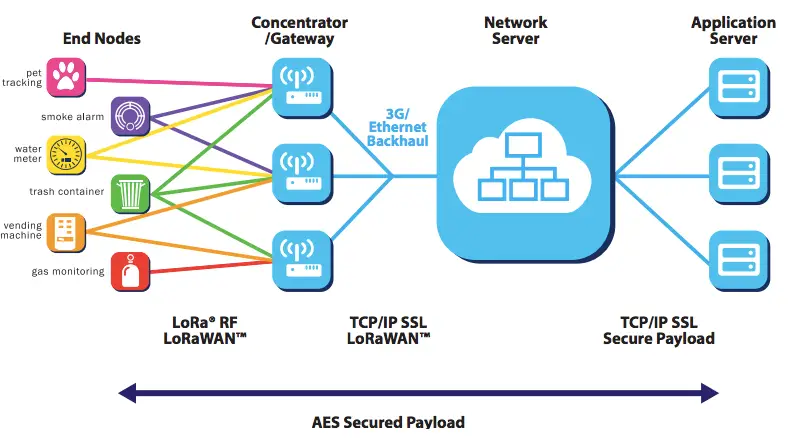
Endpoints connect over LoRa links with gateways deployed outdoors like on buildings, towers, etc. Gateways interface backhaul connectivity like WiFi, Ethernet or Cellular. They can cover miles long range with data rates that adapt between 0.3kbps to 50kbps.
Gateways forward messages from potentially millions of devices back to a central network server. It manages essential functions like security, addressing, device profiles, rules, data rate adaption etc. It also de-duplicates messages and controls confirmed delivery between applications and devices.
The network server hands off data through IP connections to an application server. This is where the IoT application and business logic resides, to decode sensor data and connect it with dashboards, analytics, cloud services etc.
LoRaWAN device classes A, B, & C
LoRaWAN contains three different types of end devices to meet the different needs that arise in a wide range of applications:
Class A: Lowest power, and bidirectional end device
This is the default class that lets endpoints transmit uplink at any time, followed by two short downlink receive windows. As uplink communication is asynchronous and downlink follows uplink timing, devices can sleep maximizing battery life. Downlink messages get buffered on the server.
Class B: A bidirectional terminal device with deterministic downlink delay
Class B devices open additional receive windows at scheduled intervals synchronized with the network. This allows lower downlink latency at the cost of higher power consumption. The deterministic delay is programmable over 128 secs making it suitable for battery operation.
Class C: Minimum delay, bidirectional terminal equipment
Building on Class A, Class C keeps the receiver open continuously unless transmitting. This allows the server to downlink anytime with near zero delay. However, continuous listening can consume over 50mW, so Class C suits mains-powered applications. Temporary switching is possible.
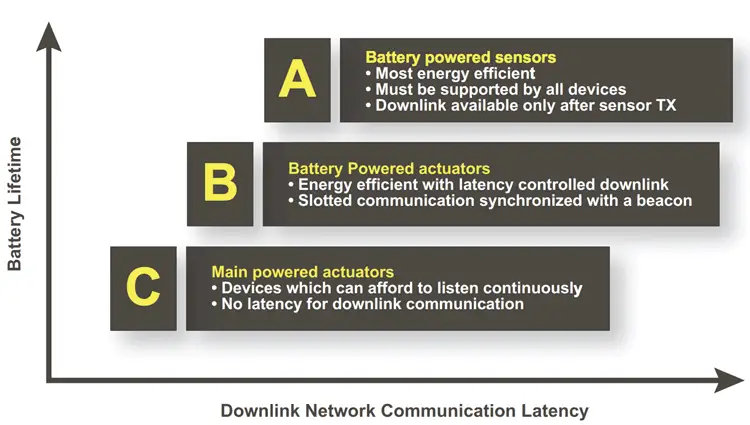
Comparison of LoRaWAN vs. other LPWAN technologies
The LPWAN space, a rapidly growing part of the IoT connectivity market, includes SigFox, LoRaWAN, NB-IoT, LTE-M, Link Labs, and Weightless. Other protocols like LTE-CAT M, IEEE P802.11AH, and Dash7 also play vital roles in the LPWAN ecosystem. In this section, we’ll mainly dive into the previous technologies mentioned.
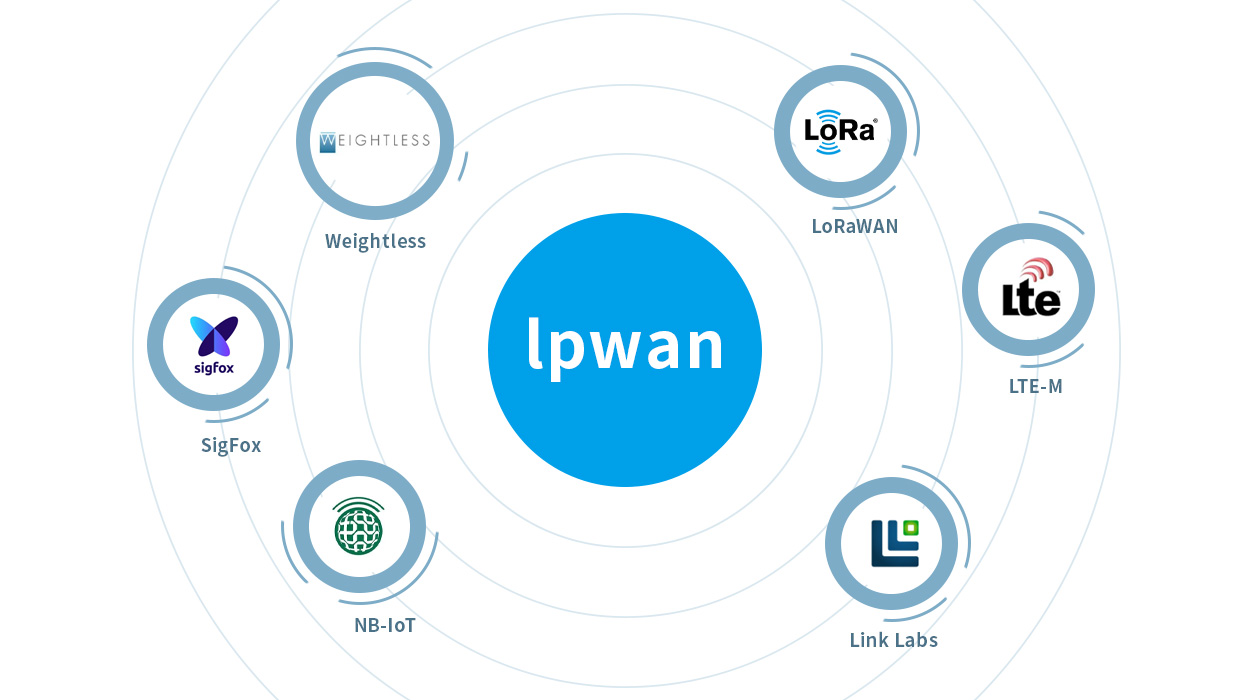
- LoRaWAN
LoRaWAN, governed by the LoRa Alliance, is characterized by its open standard network layer with support from a diverse industry alliance. Operating on the LoRa chip, it excels in uplink only applications through the efficient distribution of coded packets, reducing collision and interference. Despite being open standard, LoRaWAN’s dependence on Semtech’s chips for full stack implementation adds a layer of exclusivity.
- Sigfox
SigFox, a French company founded in 2009, distinguishes itself with extended range achieved through slow modulation rates. As a proprietary technology, SigFox is a good choice for applications requiring infrequent and small data bursts, such as smart trash cans and parking sensors. However, limitations in downlink capability and susceptibility to signal interference pose challenges for certain use cases.
- NB-IoT and LTE-M
NB-IoT and LTE-M are emerging in the LPWAN space, leveraging standard LTE connectivity. NB-IoT excels in energy efficiency and cost-effectiveness, making it ideal for smart city applications, while LTE-M offers a higher data rate. Choosing between the two depends on specific applications; NB-IoT is well-suited for smart meters, while LTE-M may be more advantageous for drones or vehicles.
- Link Labs
Link Labs utilizes the LoRa chip but introduces a private MAC layer called Symphony Link. Symphony Link adds some important connectivity features over LoRaWAN, including guaranteed wireless firmware upgrades, message reception, repeater capabilities, and the removal of dynamic range and duty cycle limits.
- Weightless
Weightless SIG’s mission is to standardize LPWAN technology. As the only truly open standard, Weightless is operating on an unlicensed spectrum at sub-1ghz. 3 versions of Weightless can be used for different purposes:
Weightless-w: Leverage whitespace (unused local spectrum in the licensed television band)
Weightless-n: An unlicensed spectrum narrowband protocol derived from NWave technology
Weightless-p: Two-way protocol derived from M2COMM’s Platanus technology
Weightless N and P are more popular choices because the battery life of Weightless W is shorter.
Advantages of LoRaWAN technology
Here are some of the standout benefits offered by LoRaWAN technology:
- Ultra-low power: LoRaWAN devices can operate in low-power mode and its battery can last for several years.
- Exceptional range: Long-range coverage up to 10 miles in rural areas and 1-3 miles in urban environments
- Indoor deep penetration: LoRaWAN networks can offer indoor deep coverage, and easily cover multi-story buildings.
- Free Spectrum licensing: LoRaWAN Technology operates on free (unlicensed) frequencies, without additional spectrum licensing fees.
- High capacity: Network capacity to support over a million devices per gateway coverage.
- Public and private deployment: It’s easy to deploy both private and public LoRaWAN networks with the same software and hardware (end devices, gateways, antennas).
- End-to-end security: Strong 128 bit AES encryption end-to-end for robust security.
- Low cost: Very low cost for devices and operation making it ideal for large device deployments
- Ecosystem: LoRaWAN has a very large ecosystem of device manufacturers, application developers, network service providers, and solution vendors.
Use cases of LoRaWAN technology
Here are some promising use case categories perfect for LoRaWAN:
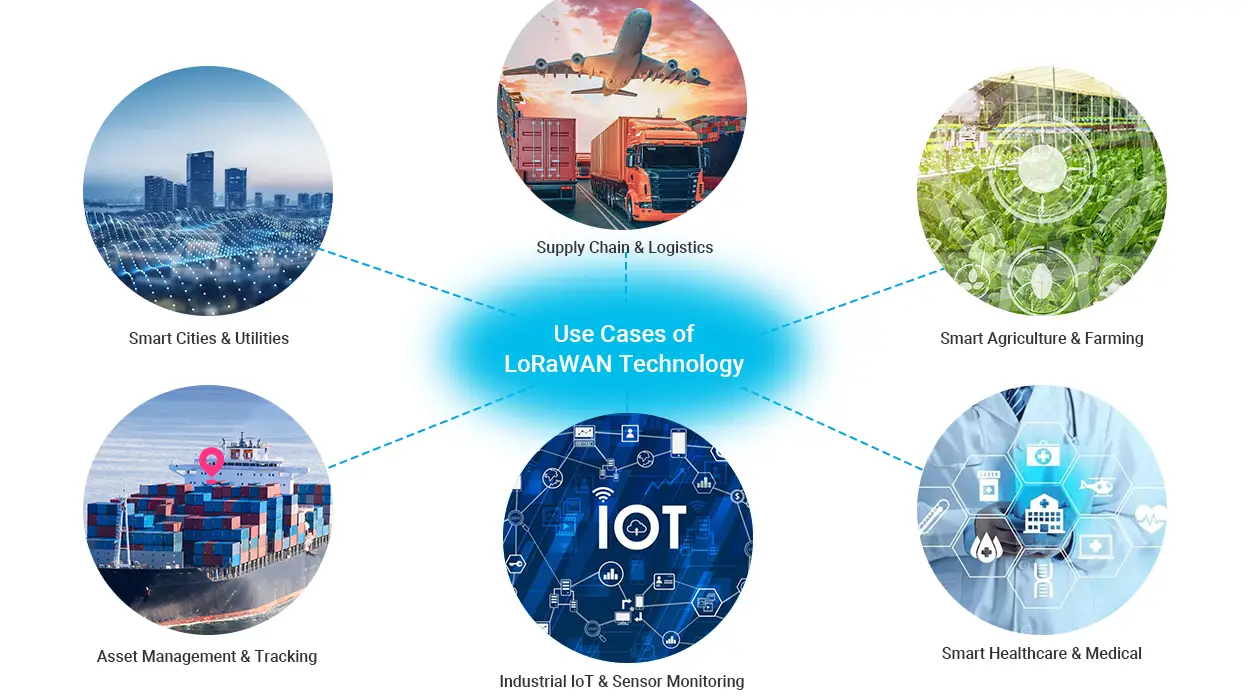
Smart Cities & Utilities
Cities can efficiently connect civic infrastructure like meters, waste bins, street lights, pollution monitors. Even vehicle and bus tracking is viable enabling smart transportation. For utility companies, smart metering at scale is highly feasible spanning gas, electric and water meters.
Supply Chain & Logistics
Logistics firms can track location, condition and movement of containers, pallets across multiple depots and in transit. Cold chain can ensure integrity of perishable goods. Port operations can track cranes, vehicles, cargo etc.
Smart Agriculture & Farming
LoRaWAN sensors can proliferate across farms, orchards and vineyards monitoring soil moisture, crop environment, storage conditions round the year via battery sensors. Animal health and location wearables are also emerging.
Asset Management & Tracking
Valuable assets like equipment, devices can be monitored across locations for parameters like temperature, shocks, motion etc. improving safety, utilization and lifetime. LoRaWAN-tagged pallets, boxes streamline warehouses.
Industrial IoT & Sensor Monitoring
Factories can deploy reliable, long range sensors to track assets, safety metrics and product quality indicators across floors sans wires or battery changes. Even remote sites like pipelines, rigs etc. can be measured.
Smart Healthcare & Medical
Hospitals can efficiently connect medical devices and assets like wheelchairs using LoRaWAN for better tracking and utilization. Patient wristbands during hospitalization benefit workflows by monitoring movement. Assisted living facilities also gain from location and fall detection capabilities improving safety.
MOKOSmart LoRaWAN sensors for your application
MOKOSmart offers a variety of LoRaWAN-enabled sensors that are perfect for many long-range low-power IoT applications. Some of the MOKOSmart LoRaWAN sensors that may be useful include:
LoRaWAN PIR Motion Sensor: Detects motion and can be used for occupancy monitoring, intruder alerts, automation triggers, and more.
LoRaWAN GPS Tracker: Tracks the real-time location of assets and can also monitor temperature and movement. Useful for fleet management, asset tracking, and theft prevention.
LoRaWAN Temperature Humidity Sensor: Monitors ambient temperature and humidity levels. Great for cold chain logistics, HVAC monitoring, storage unit tracking, and environmental analytics.
LoRaWAN Panic Button: An emergency alert button that can notify personnel of issues or activate emergency response systems when pressed.
LoRaWAN Parking Sensor: Detects vehicle presence in a parking space. Enables smart parking applications and analytics.
LoRaWAN Smart Badge: Tracks real-time location of personnel and can also act as a panic button for sending alerts. Great for workforce management, access control, and safety applications.
How to get started with LoRaWAN technology
To deploy LoRaWAN solutions from proof of concept to large scale rollouts, main steps typically involve:
- Research if LoRaWAN meets the reliability, range and battery lifetime
- Understand coverage options via public networks, community networks or private deployments
- Select hardware like LoRa modules and LoRaWAN sensors
- Check for local network service provider availability or deploy own gateways
- Connect end-device hardware via gateways to a LoRaWAN network server
- Develop device application and IoT app integration with cloud services
- Test coverage plus sensor performance across expected deployment conditions
With LoRaWAN coverage and devices options expanding quickly, now is a great time to explore your own innovative LoRaWAN use cases.
